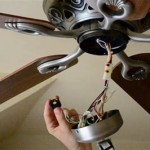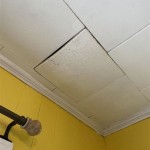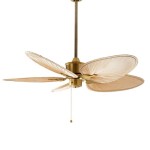What Can Water Damage On A Ceiling Or Wall Indicate
Water damage on a ceiling or wall can be a sign of a serious problem, such as a leak in the roof or plumbing. It's important to identify the source of the water damage and fix it as soon as possible to prevent further damage to your home. Here are some of the most common causes of water damage on ceilings and walls:
- Roof leaks: A leak in the roof can allow water to seep into your home and damage the ceiling or walls. Look for signs of water damage, such as stains, discoloration, or peeling paint, on the ceiling or walls. You may also see water dripping from the roof or water stains on the outside of your home.
- Plumbing leaks: A leak in a pipe or fixture can also cause water damage to a ceiling or wall. Look for signs of water damage around pipes and fixtures, such as stains, discoloration, or mold. You may also hear the sound of running water or dripping water.
- Condensation: Condensation can occur when warm, moist air comes into contact with a cold surface, such as a window or wall. This can cause water to condense on the surface and eventually lead to water damage. Look for signs of condensation, such as water droplets or streaks, on windows, walls, or ceilings.
- Flooding: Flooding can cause extensive water damage to a ceiling or wall. If your home has been flooded, it's important to clean up the water and dry out the area as soon as possible to prevent further damage.
If you discover water damage on a ceiling or wall, it's important to take action to identify the source of the problem and fix it. Ignoring water damage can lead to more serious problems, such as structural damage, mold growth, and health problems.
Here are some tips for identifying the source of water damage on a ceiling or wall:
- Look for the source of the water: Start by looking for the source of the water, such as a leak in the roof or a plumbing fixture. Check for signs of water damage around pipes, fixtures, and windows.
- Check the roof: If you suspect a roof leak, check the roof for signs of damage, such as missing or damaged shingles, holes, or cracks. You may also see water stains on the outside of your home.
- Inspect the plumbing: If you suspect a plumbing leak, inspect the plumbing fixtures and pipes for signs of leaks. Look for water stains, drips, or corrosion around pipes and fixtures.
- Look for condensation: If you suspect condensation, look for signs of condensation, such as water droplets or streaks, on windows, walls, or ceilings. You may also feel a cold or damp spot on the surface.
Once you have identified the source of the water damage, you can take steps to fix the problem and prevent further damage. If the problem is a roof leak, you may need to repair or replace the damaged shingles. If the problem is a plumbing leak, you may need to replace the leaking pipe or fixture. If the problem is condensation, you may need to improve ventilation in the area or use a dehumidifier to reduce moisture levels.
If you are not able to identify the source of the water damage or fix the problem yourself, it's important to contact a qualified professional for help.

Understanding Flooring Wall Water Damage Uwrg

8 Signs Of Water Damage On Ceiling

Spotting The Signs Of Ceiling Damage

How To Identify Early Signs Of Water Damage On Ceiling

What Those Water Stains On Your Ceiling Mean And To Do Macontracting

Water Damage In Your Ceiling Isn T Always Easy To Spot Servpro

Water Stains On The Ceiling American Restoration

What To Do When Storms Create Water Spots On Your Ceiling

Is A Water Stain On Drywall Sign Of Bigger Problem Mchenry Area Chamber Commerce

Water Stains On Ceiling Common Causes Solutions For 2024
See Also








